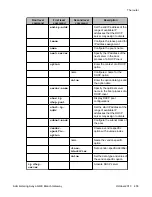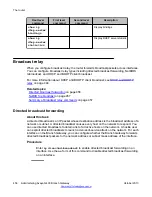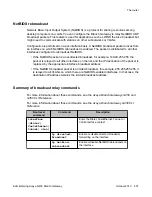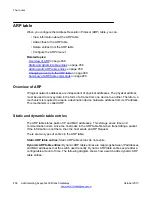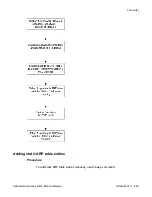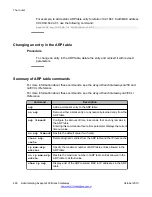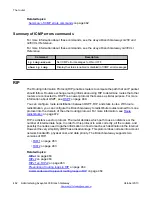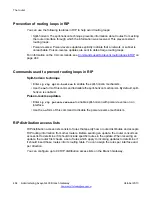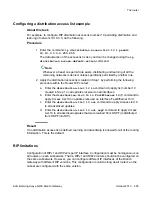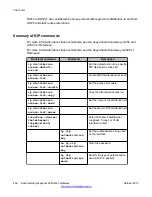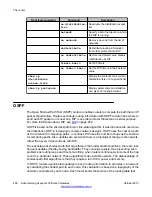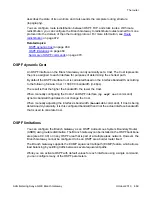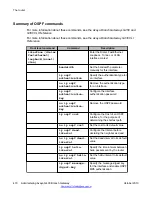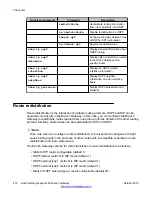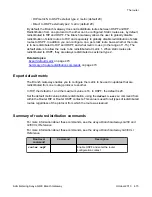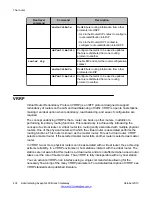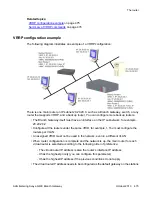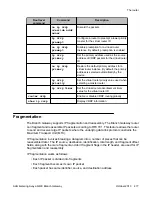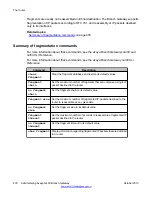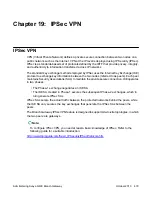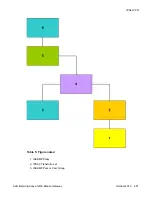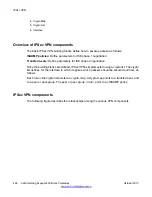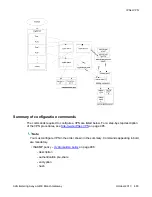
Root level command
Command
Description
no distribution-
list
Deactivate the distribution access
list
network
Specify a list of networks on which
the RIP is running
no network
Remove an entry from the list of
networks
redistribute
Redistribute routing information
from other protocols into RIP
no redistribute
Restore the default value, disable
redistribution by RIP
timers basic
Set RIP timers
no timers basic
Set the RIP timers to their default
value
show ip
distribution
access-lists
Display the contents of all current
distribution lists or of a specific list
show ip protocols
Display parameters and statistics
of a given IP routing protocol
OSPF
The Open Shortest Path First (OSPF) protocol enables routers to compute the path that an IP
packet should follow. Routers exchange routing information with OSPF to determine where to
send each IP packet on its next hop. RIP is an older protocol that serves a similar purpose.
For more information about RIP, see
OSPF is based on the shortest-path-first or link-state algorithm. It was introduced to overcome
the limitations of RIP in increasingly complex network designs. OSPF uses the cost of a path
as the criterion for comparing paths. In contrast, RIP uses the number of hops as the criterion
for comparing paths. Also, updates are sent when there is a topological change in the network,
rather than every 30 seconds as with RIP.
The advantage of shortest-path-first algorithms is that under stable conditions, there are less
frequent updates (thereby saving bandwidth). They converge quickly, thus preventing such
problems as routing loops and Count-to-Infinity, when routers continuously increment the hop
count to a particular network. These algorithms make a stable network. The disadvantage of
shortest-path-first algorithms is that they require a lot of CPU power and memory.
In OSPF, routers use link-state updates to send routing information to all nodes in a network
by calculating the shortest path to each node. This calculation is based on a topography of the
network constructed by each node. Each router sends that portion of the routing table that
The router
468 Administering Avaya G430 Branch Gateway
October 2013
Summary of Contents for G430
Page 1: ...Administering Avaya G430 Branch Gateway Release 6 3 03 603228 Issue 5 October 2013 ...
Page 12: ...12 Administering Avaya G430 Branch Gateway October 2013 ...
Page 246: ...VoIP QoS 246 Administering Avaya G430 Branch Gateway October 2013 Comments infodev avaya com ...
Page 556: ...IPSec VPN 556 Administering Avaya G430 Branch Gateway October 2013 Comments infodev avaya com ...


